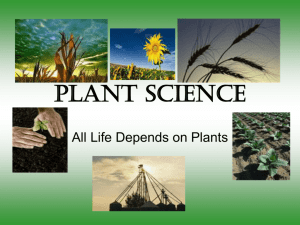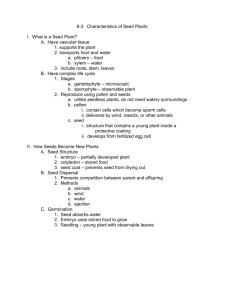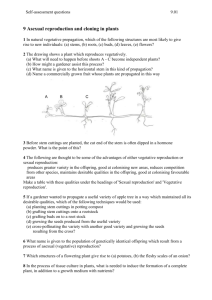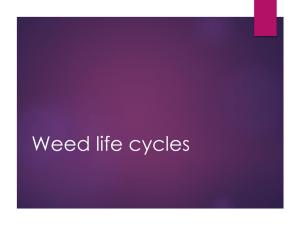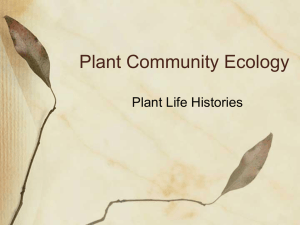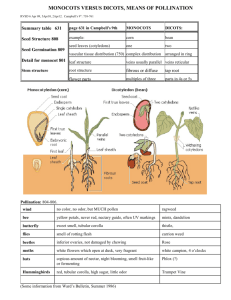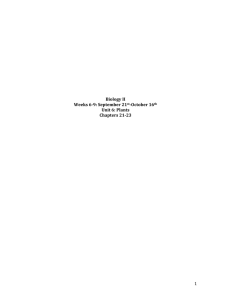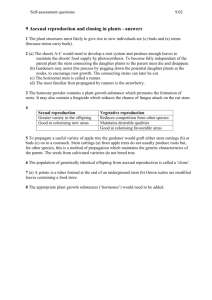Plant Structure, Reproduction & Development Lecture Notes
advertisement
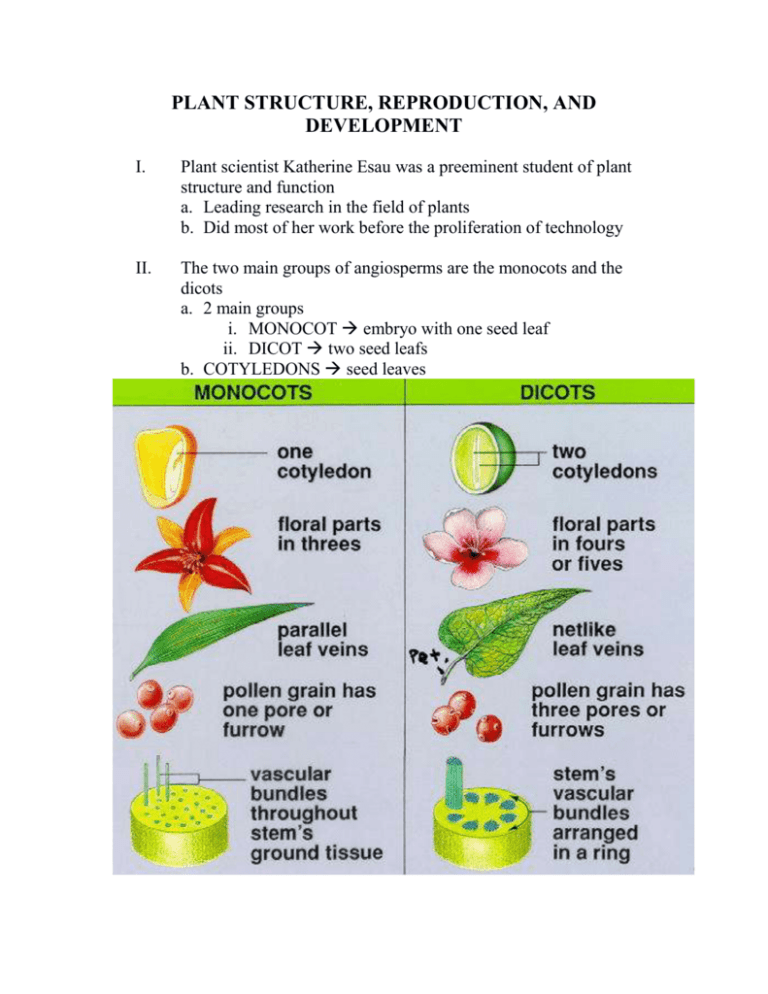
PLANT STRUCTURE, REPRODUCTION, AND DEVELOPMENT I. Plant scientist Katherine Esau was a preeminent student of plant structure and function a. Leading research in the field of plants b. Did most of her work before the proliferation of technology II. The two main groups of angiosperms are the monocots and the dicots a. 2 main groups i. MONOCOT embryo with one seed leaf ii. DICOT two seed leafs b. COTYLEDONS seed leaves III. The plant body consists of roots and shoots a. ROOT SYSTEM anchors it in the soil, absorbs and transports minerals and water, and stores food b. ROOT HAIR outgrowth of an epidermal cell; increases surface area for absorption c. SHOOT SYSTEM made up of stems, leaves, and adaptations for reproduction i. STEM hold plants upright 1. NODES point where leaves are attached 2. INTERNODES portion of the stem between nodes ii. LEAVES main site of photosynthesis IV. Many plants have modified roots and shoots a. RHIZOMES modified horizontal stems b. TUBERS end of rhizomes; store food (starch) V. Plant cells and tissues are diverse in structure and function a. SIEVE-TUBE MEMBERS food-conducting cells b. VASCULAR TISSUE i. XYLEM water transport ii. PHLOEM food (nutrient) transport VI. Three tissue systems make up the plant body a. 3 Tissue System i. EPIDERMIS “skin” 1. CUTICLE waxy coating ii. VASCULAR SYSTEM 1. Made of xylem and phloem iii. GROUND TISSUE SYSTEM 1. CORTEX 2. ENDODERMIS 3. PITH (in dicots) b. Leaves i. STOMATA ii. GUARD CELLS iii. MESOPHYLL VII. Primary growth lengthens roots and shoots a. INDETERMINATE GROWTH continues growth throughout life b. ANNUALS one year life cycle c. BIANNUALS two year life cycle d. PERENNIALS live for many years e. MERISTEM consists of localized, unspecialized cells that divide and generate new cells and tissues VIII. Secondary growth increases the growth of woody plants a. Secondary growth pushes the cells outward making the plant stem thicker b. CORK and CAMBIUM are unique to woody plants IX. Overview: The sexual life cycle of a flowering plant X. The development of pollen and ovules culminates in fertilization a. POLLINATION delivery of pollen grains to stigma XI. The ovule develops into a seed a. SEED COAT covering of embryo XII. The ovary develops into a fruit a. FRUIT matured ovary designed to help disperse the seeds XIII. Seed germination continues the life cycle a. GERMINATION seed growing into plant XIV. Asexual reproduction produces plant clones a. VEGETATIVE REPRODUCTION plant cloning in nature XV. Vegetative reproduction is a mainstay of modern agriculture a. VEGETATIVE PROPAGRATION man-made cloning of plants
